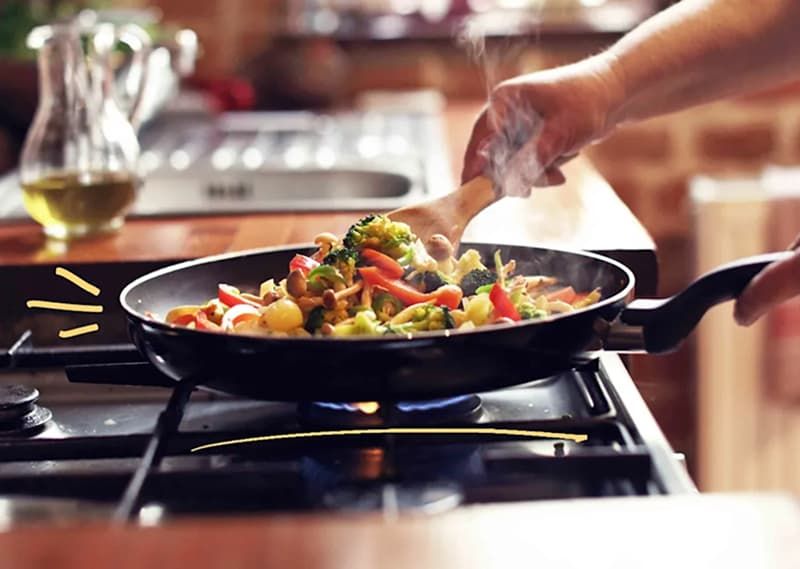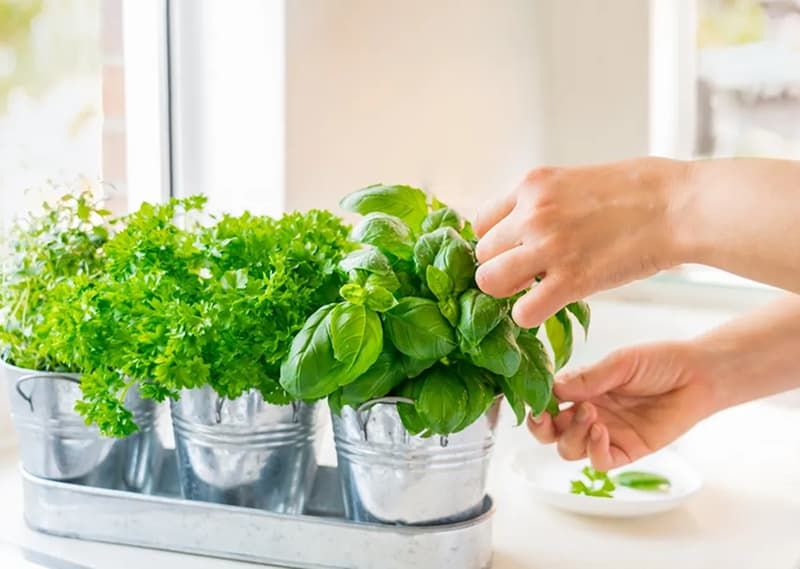Five Foods You Should Stop Putting in That Nonstick Pan
Nonstick pans are the commonplace of numerous kitchens, slick and convenient and perfect when it comes to tasks that are low-temperature such as scrambling eggs or sautéing delicate fish. However, with some foods, they are a poor option and by using them even further, you reduce the life of your pan or even risk food quality. The following are 5 types of foods you must reconsider cooking in nonstick skillet, and why each of them can be a nightmare.

The first culprit is a rib-eye steak or any thick cut beef intended for a serious sear. The whole point in searing steak is to hit very high heat to trigger the Maillard reaction and form a crust—often at surface temperatures above 500 °F (260 °C). Nonstick coatings, which are typically PTFE, start breaking down in that range, risking coating degradation and poor cooking. One culinary professional warned that a nonstick “just doesn’t get hot enough” to lock in flavor and create the crust meat demands. A pan that does not hold the heat well will only result in a crust that is limp and a stressed pan.
Second, tomato-laden sauces or stews that have been simmered over a long time, like a traditional marinara, or a red wine braise. Products such as tomatoes, citrus or vinegar have low pH and a great level of acidity. These acids may act more slowly on nonstick cookware, eroding the surface over time. One article referred to high-acid foods, like red wine and tomato-based sauces, as “tough on the coating” and likely to degrade nonstick performance if cooked in that vessel with regularity.
Third: anything, which can be placed under the broiler or in the oven at direct flame, such as broiled fish fillets, open face melts or gratins. Nonstick pans are not commonly constructed to allow broiling. The highly concentrated radiant heat from above may be more than the coating can safely tolerate; warping and coating failure may occur. Some say under no circumstance should a non-stick pan ever go under a broiler.
Fourth is deep frying or heavy oil-based tasks: you preheat an empty pan, such as attempting tempura or shallow frying hash browns in a large oil bath. A nonstick coating heated while empty can reach dangerously high surface temperatures in short order and degrade the chemical layer. While manufacturers recommend always including some food or oil before heating, heavy oil cooking can even push things beyond the safe medium-heat range generally recommended under ~500 °F for PTFE.
Finally, sticky, sugary candy-type cooking or deglazing tasks-think caramel, toffee, or pan sauces built via scraping browned bits-are poor fits. Nonstick surfaces are designed to avoid fond, or those browned bits, so using them for sauces that depend upon flavorful residue undermines both pan and dish. AllRecipes writes that pan sauces are on the list of things to avoid in nonstick cookery.
It's not just a matter of saving your pan; it's about cooking the food correctly. Attempting to sear a steak in a nonstick skillet or to simmer a tomato-wine ragout in one is to work against the very design of the pan. In the case of steak, a cast iron or heavy stainless steel skillet is used that retains heat, encourages the formation of the crust and is resistant to a high temperature. A stainless steel or enameled Dutch oven will be suitable where acidic sauces are to be used or where the simmer is long.
So what’s the takeaway? Use your nonstick pan as it is best with low or medium-heat cooking, delicate proteins (such as eggs or fish), fast sautéing, and little oil. Stop all the heavy lifting-high heat, acid-bomb sauces, broiling, heavy frying, panorama pan sauces—to cook ware that was designed to work.
By avoiding these five different types of food in your non-stick skillet, not only will you preserve your pan life, but also you will also cook smarter. Your steak will be crisp, your sauce will be richer and your nonstick surface will be good for many breakfasts and not just one big misfire.
 Disclaimer:
Disclaimer:
The content provided on our blog site traverses numerous categories, offering readers valuable and practical information. Readers can use the editorial team’s research and data to gain more insights into their topics of interest. However, they are requested not to treat the articles as conclusive. The website team cannot be held responsible for differences in data or inaccuracies found across other platforms. Please also note that the site might also miss out on various schemes and offers available that the readers may find more beneficial than the ones we cover.
Featured Articles
-
 Home & Garden
Home & GardenHouseplants That Keep Your Kitchen Bug-Free
-
 Health & Wellness
Health & WellnessWhy Pumpkin Seeds Are the Perfect Fall Snack for Weight Loss and Better Sleep
-
 Home & Garden
Home & GardenIs a Riding Lawn Mower a Worthy Investment for Your Yard?
-
 Travel
TravelThe Real Deal on Diverse Family Vacations in 2025
-
 Travel
TravelWhy Travel Insurance is a Vital Investment for Travelers Today?
-
 Travel
TravelInsider Strategies to Unlock Last-Minute Flight Deals




